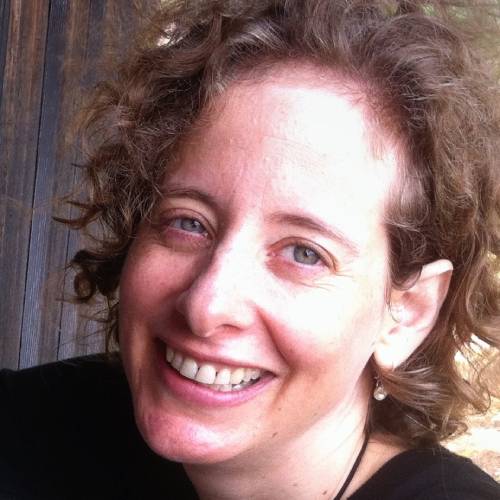When does the website for a research methods course get 30,000 hits? When the course shows how to make research rigorous and relevant.
Every year, Andy Van de Ven teaches a research methods class with a twist. Van de Ven, Professor Emeritus at the Carlson School of Management, says that the course’s goal is to teach students to write a good research proposal. He does that by teaching them engaged scholarship.
In engaged scholarship, researchers involve stakeholders in all stages of the research process. These stakeholders might be practitioners or academics in other disciplines.
The course challenges students to think about research more broadly including the problem their research seeks to solve, and how their research insights will reach the intended audience.
Even though his class usually has 15 students, the course website gets 30,000 hits each semester. “Scholars from around the globe are using the materials,” Van de Ven says.
What draws that audience?
Van de Ven’s course is filling a void. “The course website has become a kind of master resource course that faculty and students can use,” says Van de Ven.
The Class: Four Elements and One Tree
Van de Ven sees research proposal development as involving four elements in his ‘diamond model.’ The elements are problem formulation, theory building, research design and communicating/using research findings. Most research methods classes focus too much on research design, “Somehow we have lost our way, by losing sight of the importance of the problem, the theory, and how the research is used”. He spends equal time on each element.
Each stage requires engaging different stakeholders:
Formulating a problem. “Don’t simply rely upon statistics; statistics are numbing,” says Van de Ven. “It’s good to talk to the people who know something about an issue.” He recommends engaging people who have experienced an issue and who have studied it. Studying unemployment issues, a student might reach out to an unemployed person and a researcher specializing in human resources, “who knows about the nature of getting a job.”
Theory building. Students, like other researchers, generally begin with a theory in mind. “But most problems are much bigger, buzzing, blooming, and confusing than what we know ourselves,” says Van de Ven. He recommends talking with other scholars in that research area to understand the models and theories they find meaningful. “Always compare and contrast alternative theories,” says Van de Ven.
Research design. Engage people who could provide data, and those with technical expertise and methodology. Here, too, Van de Ven encourages students to seek out the human face of data. Students may have an excellent data set, but if they haven’t actually spoken to company staff, they’ve “lost sight of reality through the numbers, and don’t really know what it is they are studying.”
Communicate and use research findings. Writing a paper is not sufficient research communication. Van de Ven encourages students to think of communication as a science and learning opportunity, and to connect with diverse audiences. ‘Impact’ becomes a criterion for proposal quality. “Most researchers rush through the communication stage”, he says. He sees it as vital.
Students in the class map their proposal onto a tree diagram. The diagram captures all elements of the proposal and shows how they connect. “It’s a wonderful way of communicating on one page, all the elements that are needed to develop a research proposal,” says Van de Ven. He developed the diagram from work by Ramage et al.
Students revise their research proposal five times. Each part of the ‘diamond model’ becomes a new section of the proposal. In parallel, students fill in the tree diagram as the class progresses. Van de Ven offers examples of well-done tree diagrams that students have used to deepen their research proposals.
Deep Dive into a Class Session
What’s it like to be a student in Van de Ven’s class? Van de Ven flips the classroom. Students prepare by working through material on the website: watching a video clip, reading articles, and completing exercises. In class, Van de Ven focuses on students’ questions and presentations.
Take class #12, on “Communicating Research and Problem Solving”. Students work toward completing questions in the Research Proposal Worksheet:
How will your research findings be communicated and used?
How will you overcome communication barriers with your intended audience?
What is your plan for implementing your study findings?
He has three learning objectives for the students in this class session:
Treat communication seriously Effective knowledge transfer is a research area in itself. “It requires systematic planning and development,” says Van De Ven. “A lot of the literature that we have about communicating knowledge applies right here, to getting it communicated and used.” He draws on Paul Carlile’s framework for cross-boundary knowledge.
Practice Van de Ven wants students to understand theories of communication and feel comfortable applying them. He uses a “triad” exercise, in which each student presents his or her proposal, while two others serve as listeners. One pretends to be an academic of another discipline; the other pretends to be a practitioner from a specific organization. “The student has to speak to those two different audiences, and get feedback from those two role players.”
As students develop their proposals, they are also asked to talk to a manager or other person experiencing the issue under study.Connect Van de Ven asks students to be as concrete as possible in their proposal. He wants details: “Are you going to use a presentation? A focus group? A workshop? Are you going to be asking them how they might use the findings”?
After students leave the class, Van de Ven encourages them to continue connecting with potential audiences, whether practitioners or scholars. Even when writing a journal paper, he says, “you’re not writing to a nameless, faceless journal. It has specific readers. Go talk to one or two or three of those.”
How to Use the Website
All resources for the class are on the website. Van de Ven provides recommended readings, exercises, and videos of his presentations. Faculty interested in teaching a similar class can direct students to these materials and layer on their own perspectives.
The website represents a major commitment for Van de Ven. “I see the engaged scholarship work as having gone through three major revisions since the book [Engaged Scholarship] was published in 2007.” Rather than publishing a new book, Van de Ven focused on revising the website content. He has brought in exercises based on the concepts in the book. His goal is to make the ideas actionable and allow for learning through experience.
The book sold 8-9000 copies since publication, he points out, while the website has 25-30,000 hits each semester. “What do you think is having more impact?” Van de Ven asks rhetorically.
Find Out More
Bridging research and practice is core to the NBS mission.
And, join us as a contributor to the resources we are developing. Please share your interest by emailing Garima Sharma.
NBS’s Co-Creation Initiative
NBS seeks to help researchers navigate the path of co-creation with practitioners: integrating academic and practitioner knowledge for unique insights. Review our many existing resources and subscribe to our academic newsletter for new co-creation guidance.
We also hope you’ll contribute your own insights. Please share your interest by emailing Garima Sharma.




Add a Comment
This site uses User Verification plugin to reduce spam. See how your comment data is processed.This site uses User Verification plugin to reduce spam. See how your comment data is processed.